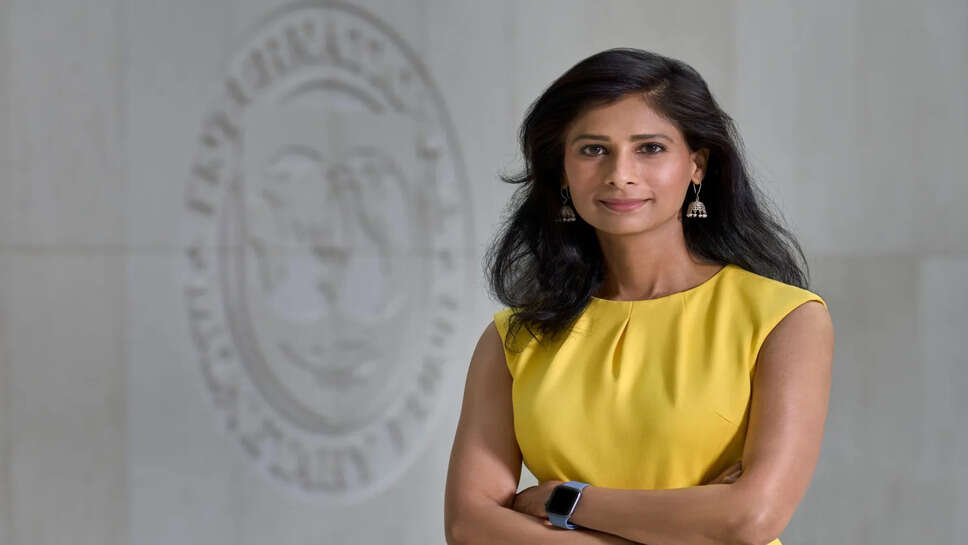Gita Gopinath: From First Deputy MD at IMF to Harvard Professor Again

Gita Gopinath is not just another economist—she’s a global phenomenon. Known for her sharp intellect, groundbreaking economic insight, and trailblazing career, Gopinath recently stepped down from her powerful position as the First Deputy Managing Director of the International Monetary Fund (IMF) to return to her academic roots at Harvard University. The move sent ripples across global financial circles and sparked wide curiosity: why would one of the world’s most influential economic voices walk away from one of the most powerful posts in international finance?
👩🎓 Early Life and Academic Excellence
Gopinath’s journey started in India, where she grew up in a middle-class family with a strong emphasis on education. From her earliest years, she was known for her academic excellence. She pursued undergraduate and postgraduate studies in economics in India before heading to the United States to further her academic career. Her intellectual ambition led her to Princeton University, where she completed her PhD in economics, mentored by some of the biggest names in the field.
This was not just the beginning of a successful academic career—it was the start of a global impact. After completing her PhD, Gopinath joined the University of Chicago before moving to Harvard, where she would eventually become one of the youngest tenured professors in the department's history.
🧠 Rise to Global Prominence
Gopinath’s academic work on exchange rates, capital flows, and international macroeconomics quickly gained traction. Her ability to explain complex economic phenomena in simple, actionable terms made her stand out. As the global economy reeled from the shocks of financial crises and the COVID-19 pandemic, Gopinath emerged as a thought leader, regularly publishing research that shaped economic policy debates across continents.
Her clarity, confidence, and command over international finance caught the attention of global institutions. In 2018, she was appointed Chief Economist of the IMF—the first woman ever to hold the position. This made headlines around the world, especially in India, where she was celebrated as a role model for millions of aspiring economists and young women.
🌐 Life at the IMF
As Chief Economist and later as the IMF’s First Deputy Managing Director, Gopinath had an active hand in shaping international policy. She steered global conversations during the COVID-19 pandemic, worked on debt restructuring frameworks for developing nations, and pushed for global coordination in vaccine distribution and post-pandemic recovery. She became a familiar face on the global stage—whether in G20 meetings, Davos forums, or IMF briefings.
Yet even in this high-powered world, Gopinath remained a scholar at heart. She brought a research-oriented, data-driven approach to her leadership style, often pushing for evidence-based policies rather than politically expedient ones. Her efforts were widely praised, but they also demanded long hours, travel, and political balancing.
🎓 The Call of Academia
In a surprising move, Gopinath recently announced she would be stepping down from the IMF to return to Harvard. For some, this came as a shock—why abandon one of the most influential roles in global economic governance? But for Gopinath, the answer lay in purpose.
Despite her success at the IMF, she longed to return to the classroom, to research, and to mentorship. Academia offered her the freedom to explore new ideas, teach the next generation of economists, and pursue questions beyond the constraints of policymaking. She is set to resume her position as a tenured professor, where she will continue to contribute to economics—but on her own terms.
🔍 Her Legacy So Far
Gopinath’s impact at the IMF cannot be understated. She modernized the way the institution communicated with the world, introduced new tools to measure global imbalances, and elevated the Fund’s role in conversations around climate change and technological disruption. She emphasized inclusivity, resilience, and cooperation at a time when global institutions were under heavy scrutiny.
Moreover, she showed what it means to lead as a woman in an overwhelmingly male-dominated field. She brought grace, intellect, and vision to the table—challenging norms and breaking glass ceilings along the way.
📚 What’s Next for Gita Gopinath?
As she returns to Harvard, Gopinath plans to focus on cutting-edge issues like AI's impact on global labor markets, the economics of climate change, and how to manage post-pandemic inequality. She will also resume her mentorship of young economists and expand her academic writing. Free from the constraints of institutional leadership, she may now have more flexibility to take risks and challenge established frameworks.
In addition to teaching and research, many believe Gopinath will continue to serve as an informal adviser to governments, think tanks, and global institutions. Her voice remains one of the most respected in international economics, and her opinion will be sought in every major policy debate for years to come.
💬 What Her Story Means
Gita Gopinath’s journey is a story of balance—between power and principle, leadership and learning, action and reflection. She reminds us that success is not just about climbing to the top of the ladder, but also knowing when to descend and build something new from the ground up.
Her decision to leave a globally powerful position to return to teaching speaks volumes about her values. It’s a reminder that influence doesn’t always come from the podium—it often comes from the classroom, the journal article, or the student you inspire.
The Story Continues
Gita Gopinath's story is far from over. She has already changed how we understand global economics, how institutions think about development, and how women lead at the highest levels. As she begins this new chapter back at Harvard, the world watches with admiration and curiosity.
Whether advising world leaders or guiding college students, Gopinath’s next act promises to be as impactful and inspiring as the last. In her own quiet way, she continues to redefine what leadership looks like in the 21st century.
